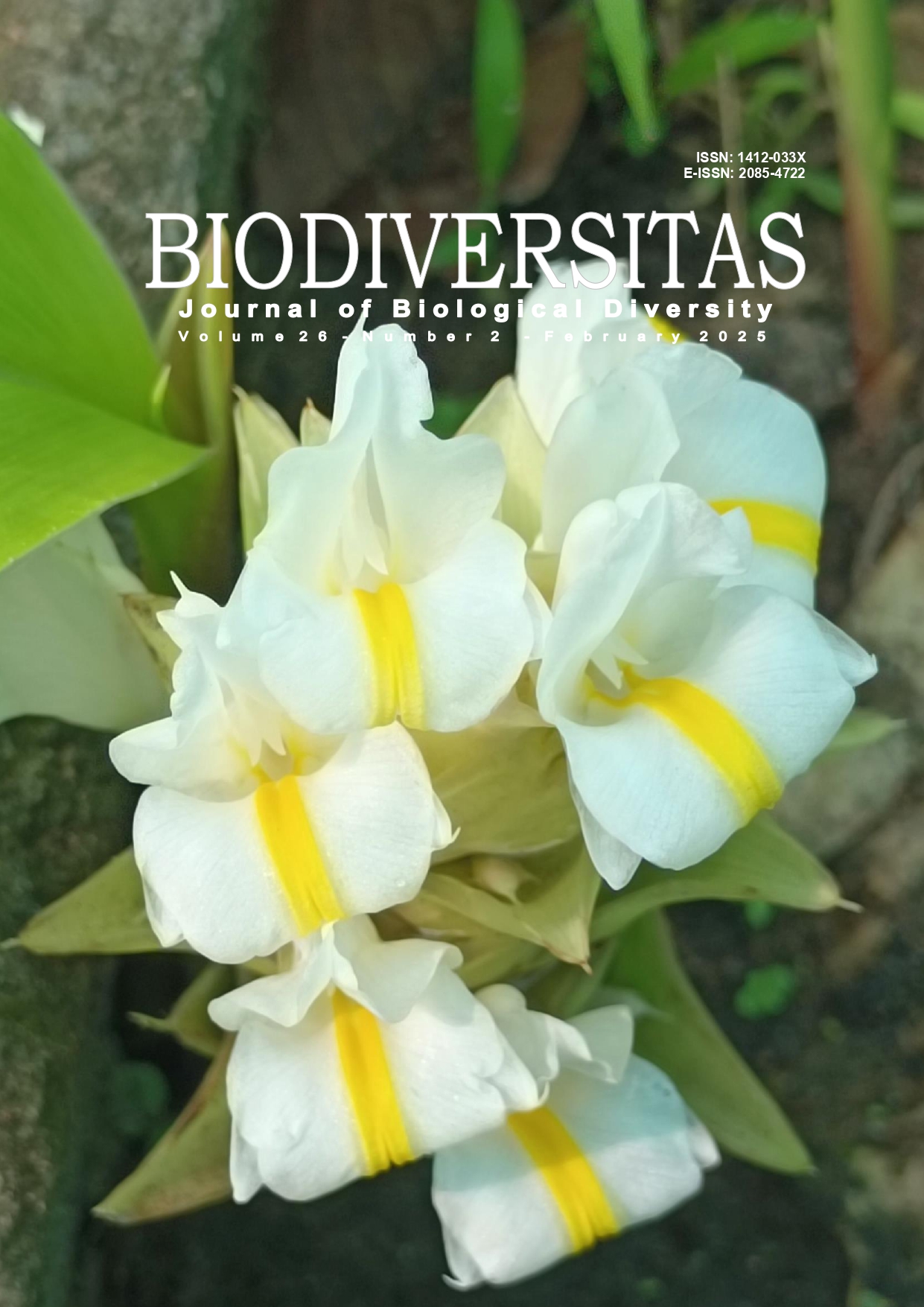Agronomic and genetic characteristics of f1 black rice × white glutinous rice crosses
##plugins.themes.bootstrap3.article.main##
Abstract
Abstract. Sholikhah U, Mujahidin I, Fanata WID, Ratnasari T, Tanzil AI. 2025. Agronomic and genetic characteristics of f1 black rice × white glutinous rice crosses. Biodiversitas 26: 528-535. Black rice cultivation faces obstacles such as long maturity periods, tall plant height, and low productivity. This study investigated the agronomic characteristics and genetic linkage of rice color traits (anthocyanin) in the F1 generation of crosses between black rice and white glutinous rice. The genetic study utilized DNA markers to detect the linkage of rice color traits, with RM 252 serving as the DNA marker. The plant materials used were Paketih white glutinous rice, which was used as the female parent, Purwokerto local black rice served as the male parent, and F1 plants derived from crosses between Paketih white glutinous rice and Purwokerto local black rice. The results revealed that genetic analysis using the RM 252 DNA marker produced two bands within a single genome of the F1 plants, indicating that the F1 plants exhibit heterozygous traits. Agronomic data, analyzed in the independent sample t-test, showed that F1 plants in the vegetative phase were classified as tall, with substantial number of tillers and productive tillers. In the generative phase, F1 plants displayed faster flowering, longer panicle length, a moderate number of grains per panicle, and heavier grain weight per clump than those of the parents, and a 1000-grain weight intermediate between the parents. The results of this study also confirm that the inheritance of rice color traits and their agronomic potential can be used to improve the efficiency of breeding programs to produce superior varieties. The genetic relationship detected with RM 252 can be used to accelerate the selection of anthocyanin-containing plants.
##plugins.themes.bootstrap3.article.details##
Most read articles by the same author(s)
- ARIF MOHAMMAD SIDDIQ, AGUNG SIH KURNIANTO, HARI SULISTIYOWATI, MUHAMAD TENTREM WIJAYA, TRI RATNASARI, NILASARI DEWI, EVA TYAS UTAMI, TANTRI RARAS AYUNINGTYAS, Wildlife existence and potential threats in Pelangi Forest Biosite of Ijen Geopark, East Java, Indonesia , Biodiversitas Journal of Biological Diversity: Vol. 25 No. 11 (2024)
- SUHARTININGSIH DWI NURCAHYANTI, RACHMI MASNILAH, SUBHAN ARIF BUDIMAN, AHMAD ILHAM TANZIL, ANGGI ANWAR HENDRA NURDIKA, Microbial consortium formulation in liquid organic fertilizer for managing bacterial leaf blight (Xanthomonas oryzae pv. oryzae), rice blast (Pyricularia oryzae), and enhancing rice productivity , Biodiversitas Journal of Biological Diversity: Vol. 25 No. 5 (2024)
- HARI SULISTIYOWATI, ELA APRILIYANTI HASANAH, ARIF MOHAMMAD SIDDIQ, TRI RATNASARI, NILASARI DEWI, AGUNG SIH KURNIANTO, Biodiversity value of tree vegetation in Rainbow Forest Biosite, Ijen Geopark, East Java, Indonesia , Biodiversitas Journal of Biological Diversity: Vol. 25 No. 6 (2024)
- AGUNG SIH KURNIANTO, LUHUR SEPTIADI, NANANG TRI HARYADI, WILDAN MUHLISON, IRWANTO SUCIPTO, NILASARI DEWI, AHMAD ILHAM TANZIL, AYU LESTARI, ROSE NOVITA SARI HANDOKO, The false alarm of experimentally companion plants to the cabbage pests with their ecological effects , Biodiversitas Journal of Biological Diversity: Vol. 24 No. 2 (2023)

